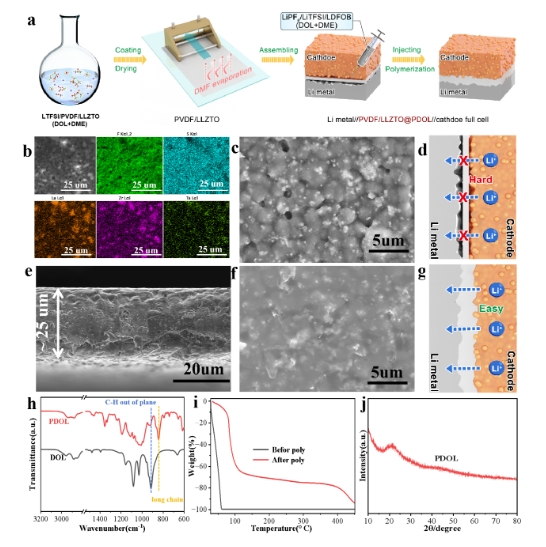Solid-state lithium-ion batteries are considered a key development direction for the next generation of lithium-ion batteries due to their high energy density, durable cycling performance, and high safety. The development of solid-state electrolytes (SSEs) is crucial for advancing the application of solid-state batteries. However, the number of SSEs that can meet the basic requirements of solid-state batteries in terms of ionic conductivity, electrochemical and thermal stability, and mechanical properties is limited.
Composite solid-state electrolytes (CSEs) exhibit the high ionic conductivity of ceramic electrolytes and the ease of processing and good flexibility of polymer electrolytes, making them one of the most promising types of solid electrolytes for the industrialization of lithium-ion batteries. However, CSEs still face significant interfacial impedance issues, which hinder their practical application.
In a study published in Journal of Colloid and Interface Science, Prof. WEN Zhenhai from Fujian Institute of Research on the Structure of Matter, Chinese Academy of Sciences, has optimized the electrode and electrolyte interface using in-situ solidification technology, achieving a lithium metal battery with excellent rate performance and cycling performance at room temperature.
Researchers prepared the LLZTO/PVDF solid electrolyte membranes with a thickness of 25 μm by using the doctor blade method. In addressing the challenge of solid-solid interfacial contact, in situ ring-opening polymerization of DOL was triggered by dual salts of LiPF6 and LiDFOB. The incorporation of PDOL significantly enhanced the ionic conductivity of LLZTO/PVDF@PDOL to 3.578 mS/cm.
Furthermore, researchers also compared the performance differences between LLZTO/PVDF and commercial separators in actual electrochemical tests. The Li||LLZTO/PVDF@PDOL||LiFePO4(LFP) exhibited 81.7 % capacity retention after 1000 cycles at the current density of 2 C. In contrast, the Li||Celgard2400@PDOL||LFP exhibited only 77 % capacity retention after 220 cycles and experienced a significant drop in coulombic efficiency. These findings demonstrate the superior cycling stability and rate performance of the LLZTO/PVDF solid electrolyte membrane compared to conventional separators.
Besides, researchers evaluated the potential of LLZTO/PVDF for practical applications. A pouch cell equipped with LLZTO/PVDF@PDOL was prepared and achieved a capacity density of 190 Wh/kg, demonstrating LLZTO/PVDF potential value for production applications.
This study offers new insights that could advance the practical applications of solid-state Li metal batteries.

Schematic illustrating the preparation of PVDF/LLZTO and PVDF/LLZTO@PDOL-based battery (Image by Prof. WEN’s group)
Contact:
Prof. WEN Zhenhai
Fujian Institute of Research on the Structure of Matter
Chinese Academy of Sciences
Email: wen@fjirsm.ac.cn